
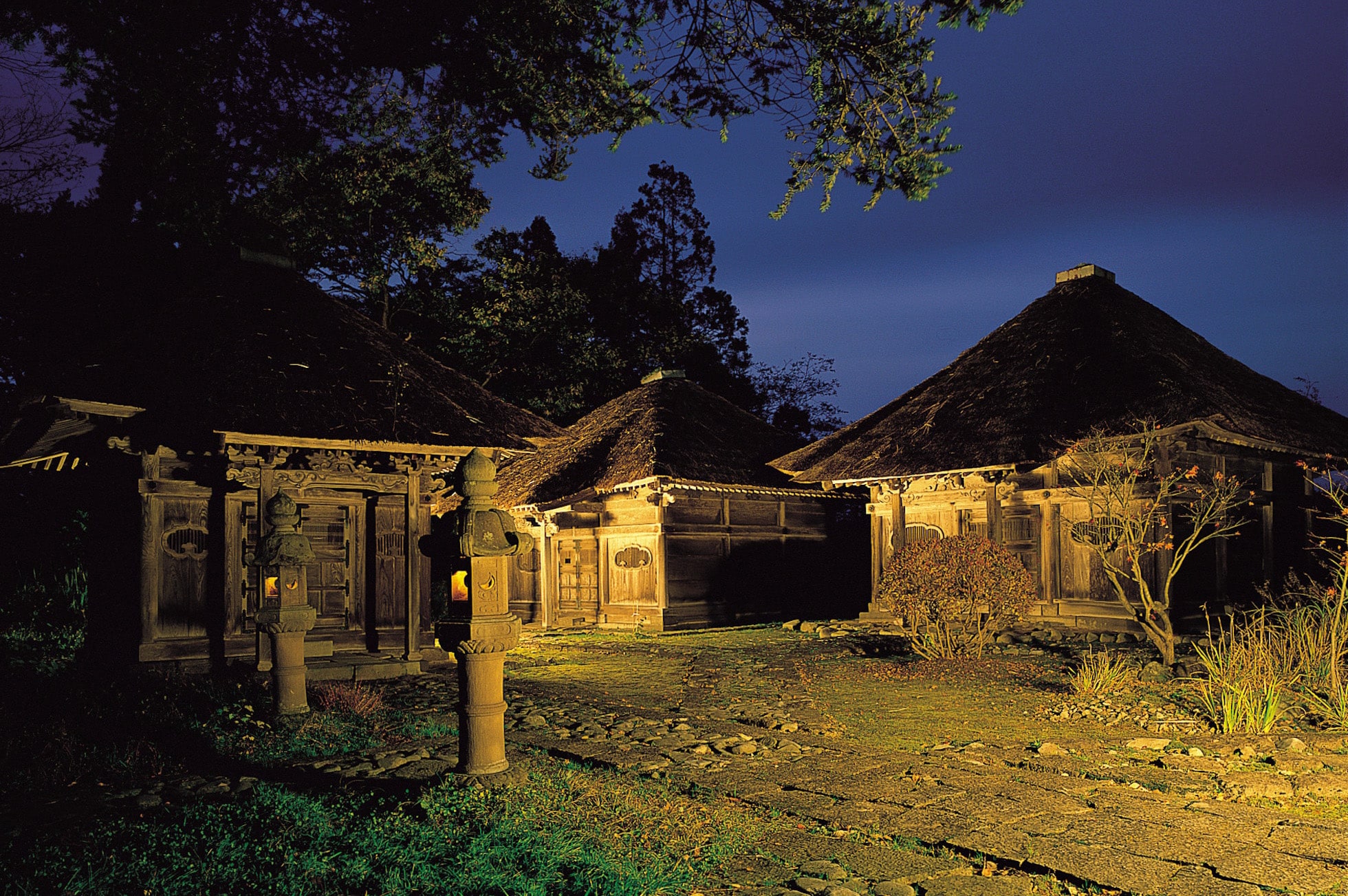
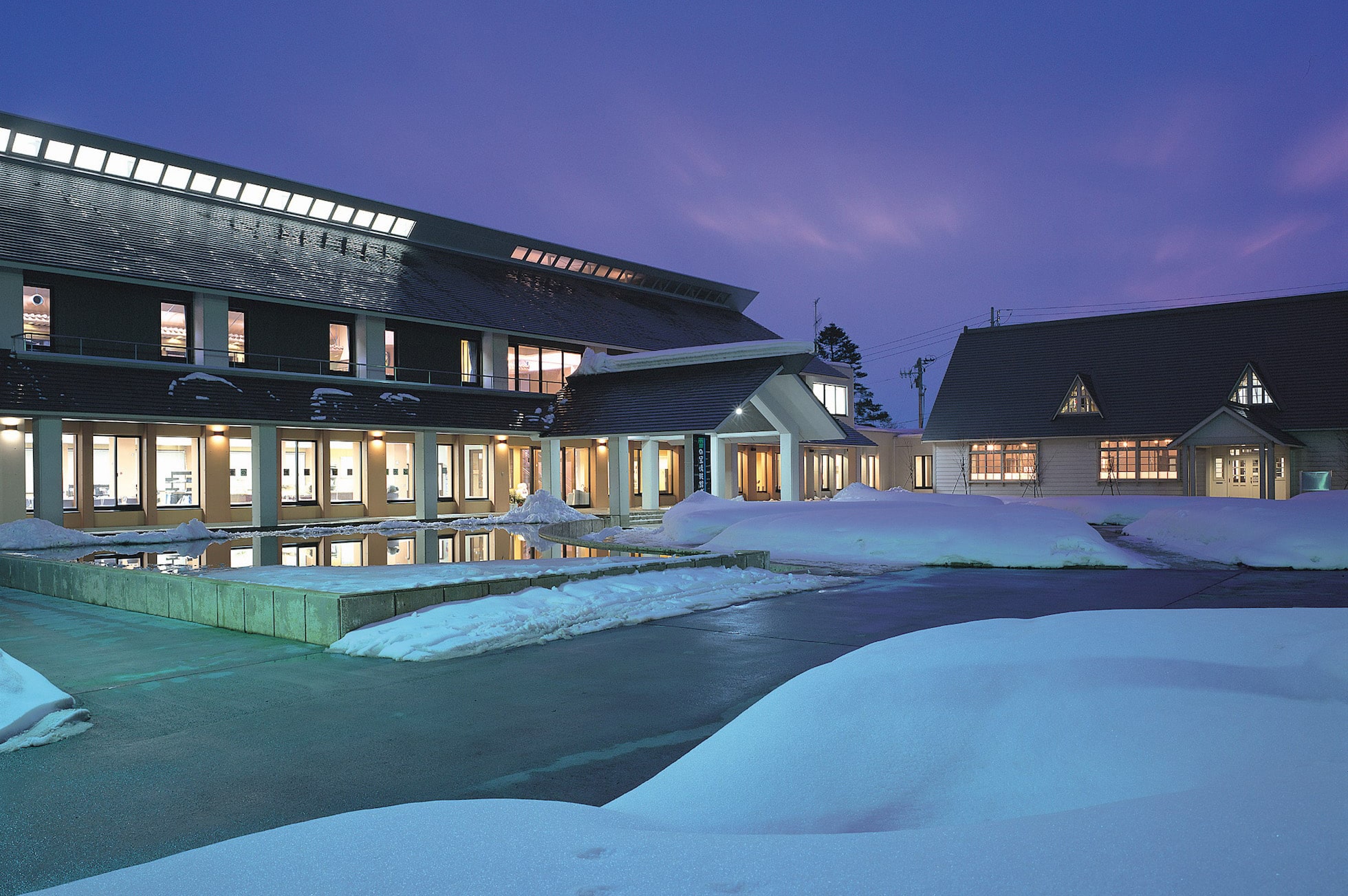

Tour of Shinjo City Cultural Properties

The Ecology Garden Gensan no Mori.
A Nationally Designated Tangible Cultural Property The Shinjo Branch of the Silk Thread Experimental Station
Construction on the buildings of the Shinjo City Ecology Garden began in 1934 for the Shinjo extension of the Fukushima Branch of the National Sericulture Experimental Station. When the entire facility was completed in 1937, it was renamed the Shinjo Branch of the Silk Thread Experimental Station.
The research facility closed in 2000. It had contributed to the development of the sericulture industry during and after the war, and made use of its extensive 10 hectare, 24.7 acres of land for research on silkworms and the cultivation of mulberries.
Ownership of the property was transferred to Shinjo City in 2002 and it reopened as the Ecology Garden Gensan no Mori. It serves as an event space, marketplace, meeting space and café, while functioning as a museum open to the public that tells the history of silkworm research in the area.
While close to twenty silkworm experimental stations existed throughout Japan, the Shinjo facility is the only one where the entire property remains. It was registered as a Nationally Designated Tangible Cultural Property in 2013 for its value in passing down the history of silkworm research during wartime.
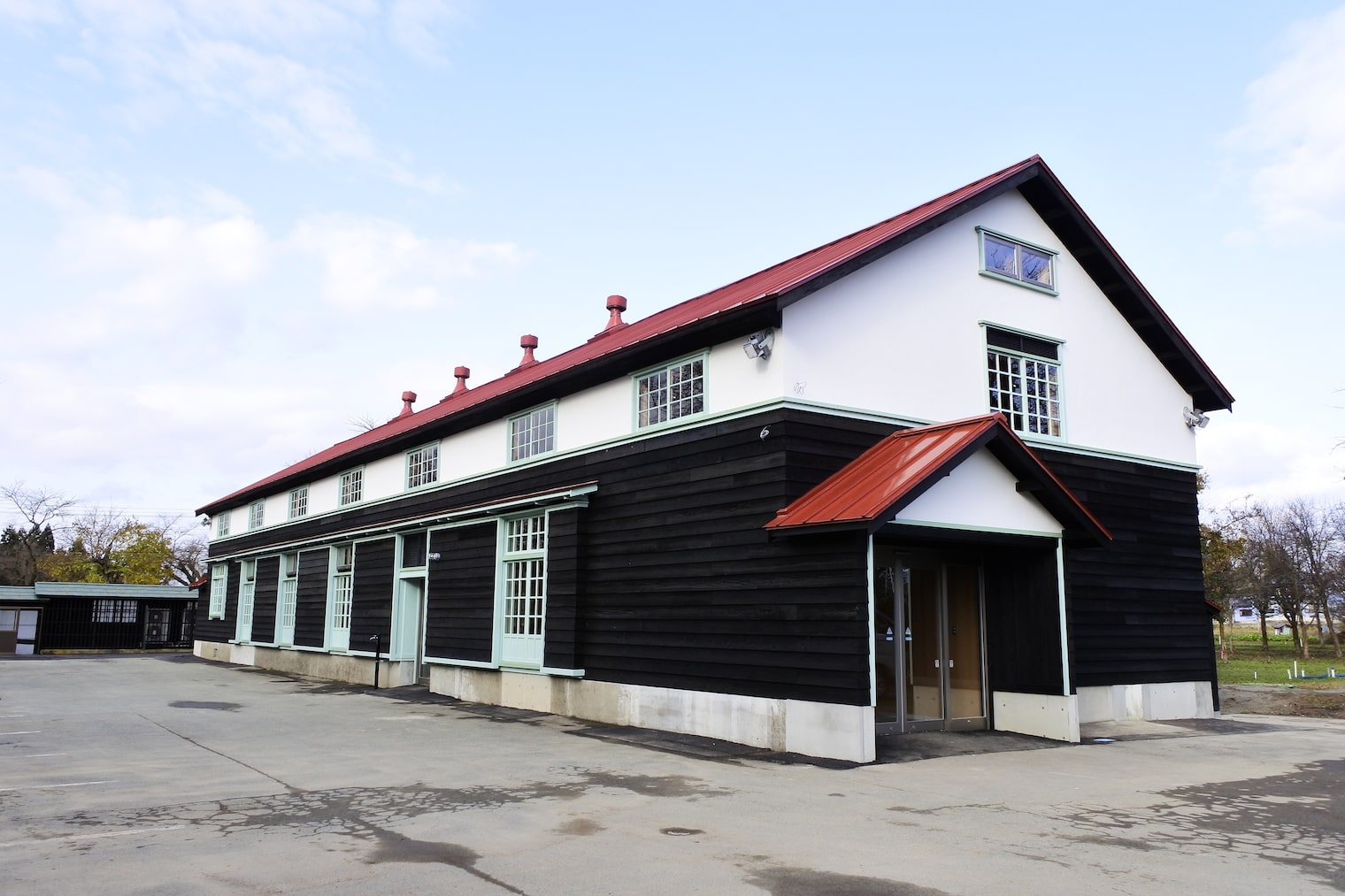
The rooms for silkworms
The rooms for silkworms share the same basic structure, each room heated by a boiler system. The ground floor was used to grow silkworms and the second floor used for cocoons.
Preservation work is being carried out on each of the silkworm research buildings. Currently, space is used by various tenants such as a farmers' market, a café and offices.

North area
In order to preserve tree varieties, many types of fruit and mulberry trees were planted on this nearly 4 hectare, 10-acre plot. Western pear, Asian pear, and apple trees are some of the trees that remain.
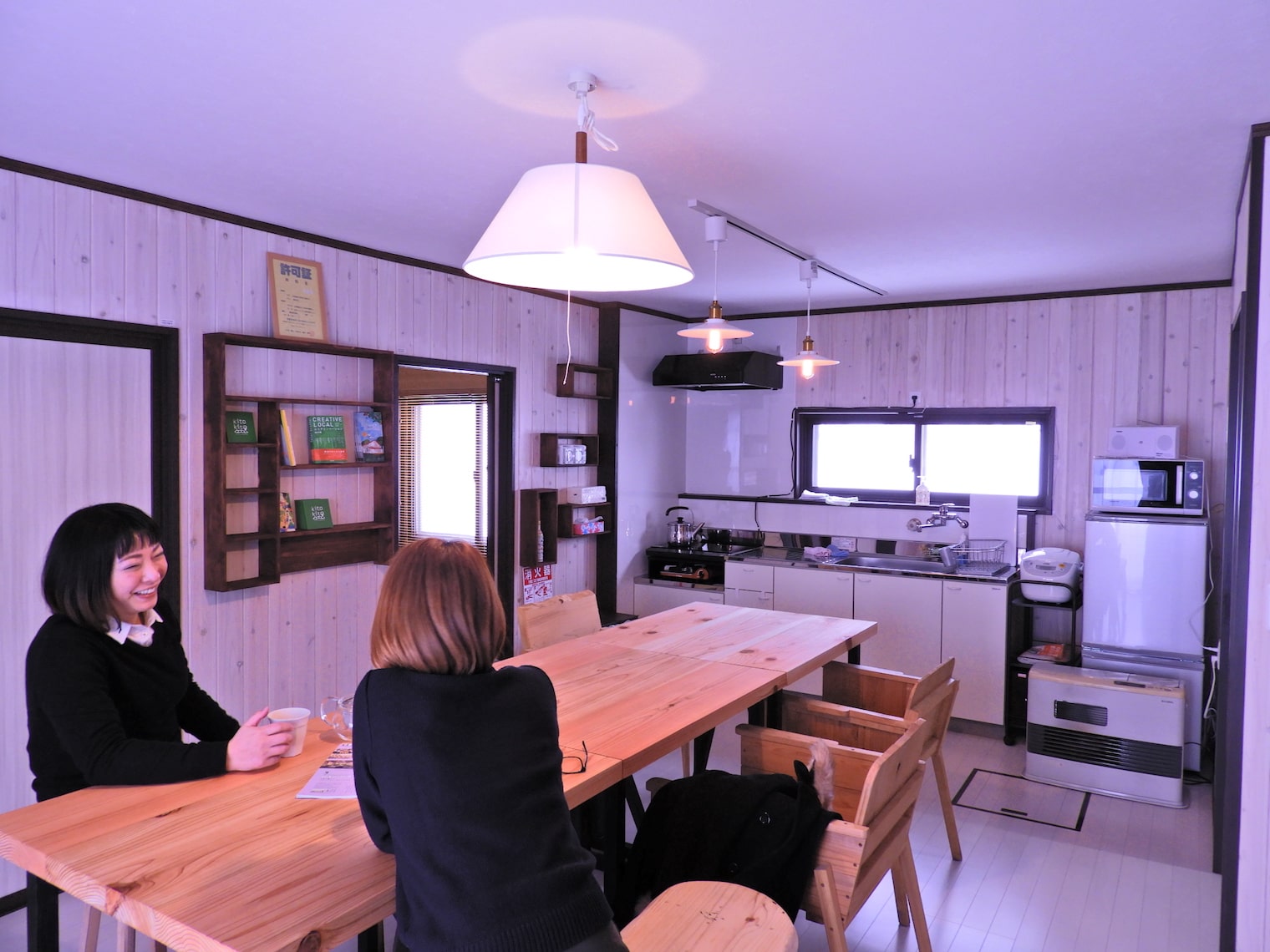
Minomushi guesthouse
guesthouse uses the building that was formerly an office for staff. Reservations can be made online.

kitokitoMarche
Every third Sunday from May to November, the KitoKito Marche (foods and hand crafts) uses the space of the Shinjo Ecology Garden for its outdoor market. It offers a great opportunity to get to meet new people and buy interesting handmade items.

Site of an Edo period mausoleum for the Tozawa family lords of the Shinjo Domain
Shinjo Domain - Tozawa Family Tombs
Eleven Tozawa feudal lords had governed Shinjo since 1622 to 1871. These structures are called otamaya. There are six otamaya here at Zuiunin and one at the Keigakuji of Kaminishiyama. They house the graves of Shinjo’s feudal lords. And their families.
The size and detailed design of the seven otamaya differ, however they share a similar basic structure, called tansohogyozukuri (single-layered pyramidal structure). The foundation is laid on a stone base and the walls are constructed of thick wooden panels supported by Japanese zelkova wood columns.
In the Edo period, it was extremely unusual for lords, their official wives, children and concubines to be buried together. The tombs of each successive Shinjo feudal lord are in one site which offers a valuable opportunity to see changes in architectural style over 100 years, from the early to late 1700s. Zuiunin has been designated a nationally important historic site because of the rarity of clan lords being buried with their families.(the otamaya was designated on May 12th, 1987.)
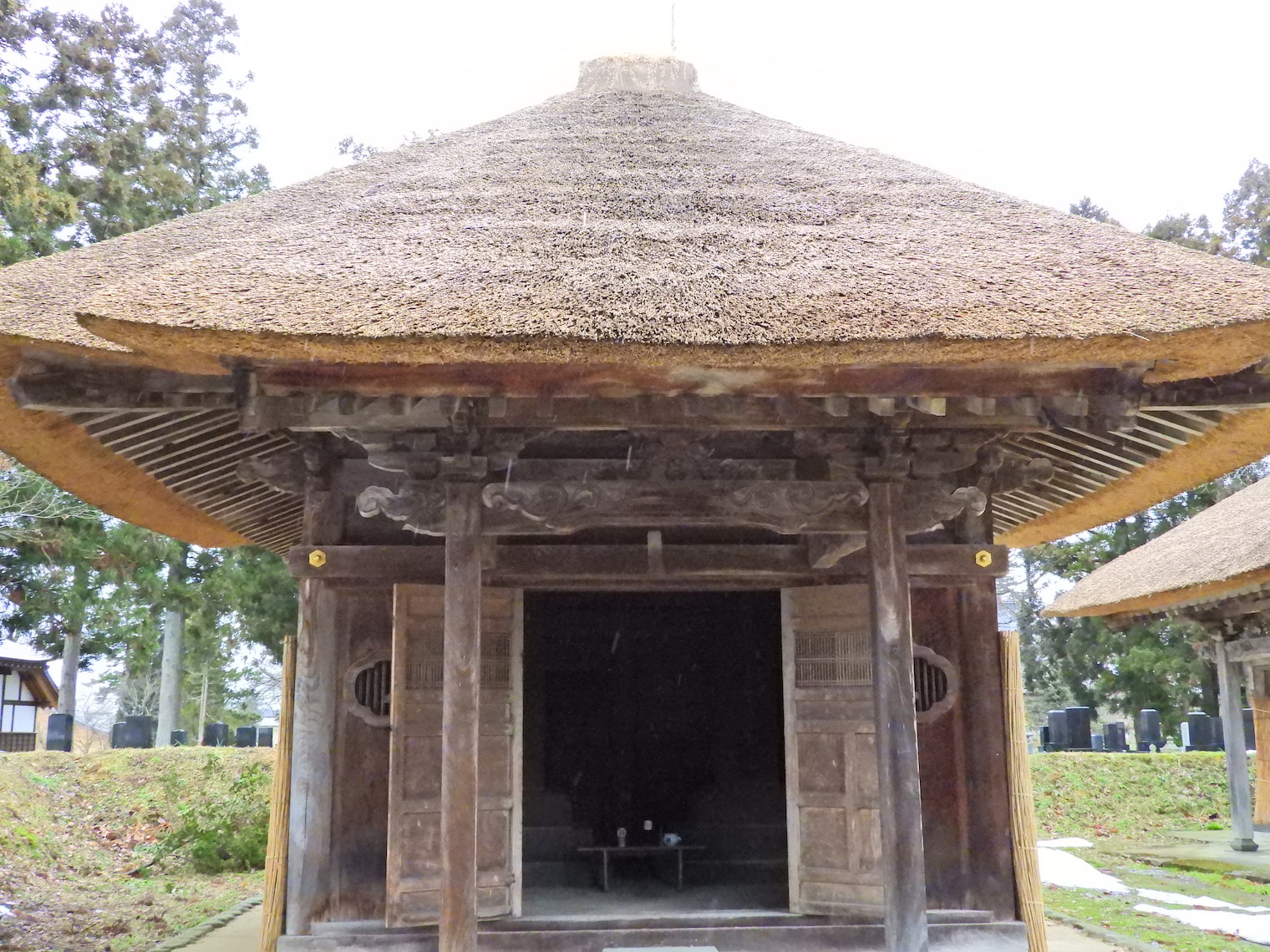
One view of Otamaya
The Tozawa kuyo arabesque pattern crest or tono-ji chrysanthemum pattern crest are carved over the entrance to the each building. These elaborate carvings are indicated the extravagant culture
of the era.
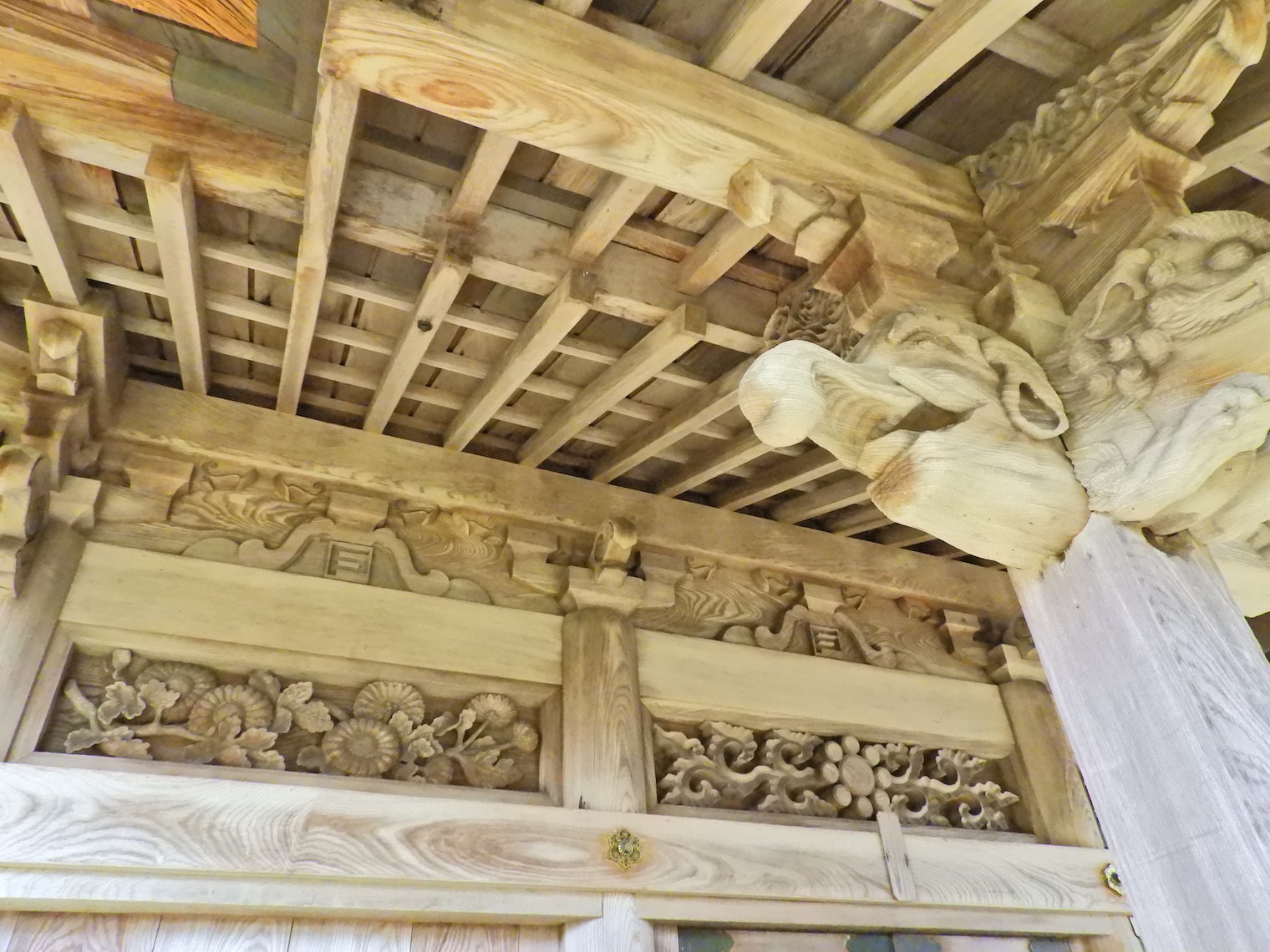
Inside the grave
As the same feature of the structures, There are renjimado(a window with vertical or horizontal wooden laths or bamboo) on the right and left side wall, the sailing is patterned in grid and the floors are constructed of stone.

Stone pagoda (gravestone inside the grave)
The gravestones for the original family members are thought to be mikageishi (granite) from Hyogo Prefecture, suggesting that there was active trade with the Kansai region by kitamae boat on the Mogami River.
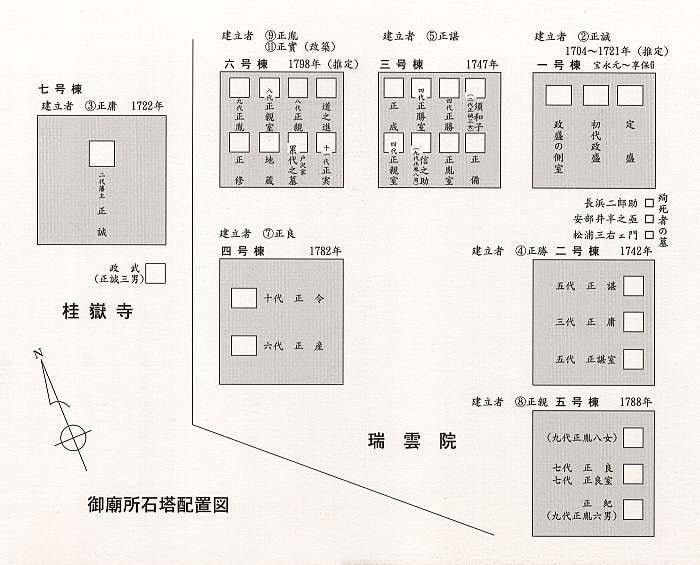
Layout (from Shinjo City homepage)
Twenty-seven stone pagodas for successive Tozawa feudal lords and their families have been placed in the six otamaya buildings on the
Otamaya site (Zuiunin and Keigakuji ). In the grave are the 11 feudal lords, their legal wives and their children.

Snowy Shinjo, the hub of snow relief efforts and exploring various ways of revitalizing agricultural villages.
The former Ministry of Agriculture and Forestry’s Snow Region Economics Investigation Facility, a Nationally Designated Tangible Cultural Property
The former Ministry of Agriculture and Forestry’s Snow Region Economics Investigation Facility started in 1933.
The former Ministry of Agriculture and Forestry’s Snow Region Economics Investigation Facility was established to explore various ways of revitalizing agricultural villages in snowy regions. It contributed to the aid of those victimized by snow damage and became a pioneer in snow damage relief initiatives.
Toshizo Matsuoka, a member of the House of Representatives from Yamagata Prefecture, had witnessed the tragic conditions of agricultural villages in snowy areas during the late Taisho and early Meiji era. Because of this experience, he made continuous efforts to appeal to the national government for measures against heavy snowfall, as he believed the damage from the harsh cold and extreme snow accumulation should be categorized as a natural disaster, similar to typhoons and floods.
Vigorous lobbying resulted in the designation of towns and villages in all six Tohoku prefectures as “Special Town and Village Districts”, and an ordinance allowing for an increase in government subsidies was passed in 1932. This was the first instance of national measures being taken to provide relief for snow damage.
The former Ministry of Agriculture and Forestry’s Snow Region Economics Facility was established to investigate various ways to revitalize agricultural villages in snowy regions.
The construction of the building completed in 1937. Characteristics of this building include a steeply gabled roof to prevent snow accumulation and triangular dormer windows.
Historic value was placed on the facility’s role in investigating management of responses to heavy snow in this area and it was registered as a Nationally Designated Tangible Cultural Property in 2014.
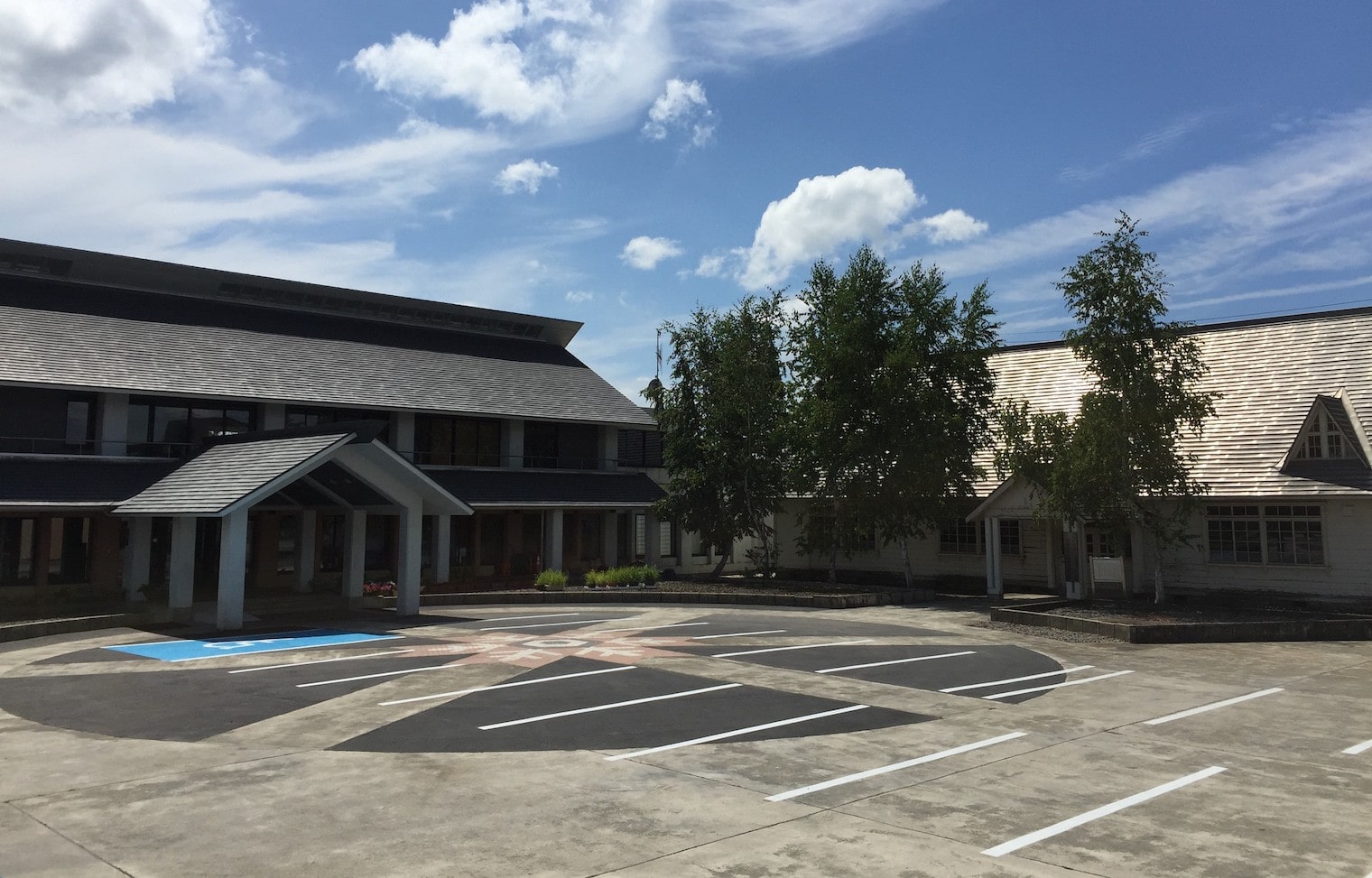
Facility whole view
This unique building was designed by the architect Wajiro Kon, a well-respected professor of Science and Engineering in School of Architecture at Waseda University. The only two remaining Kon’s buildings are the one here at Yuki no Sato and one other in Fukushima Prefecture.

Overall view
Although only one building of the old facility has been preserved, there were other buildings at the facility where efforts were made to enrich the livelihoods of snowbound agricultural villagers. Among these projects, homespun wool weaving, canning of foods, and other forms of occupation took place at the facility to provide wintertime employment.

exhibition room
In addition to the first to fourth exhibition rooms, there are special exhibition rooms. Based on each theme, various information on the snow-covered area, ideas of ancestors to survive the harsh winter of snowy countries, the history of the facility so far, etc. Is on display.

Charlotte Perriand
Charlotte Perriand was a famous French architect, designer and collaborator of the French architect Le Corbusier. She visited Shinjo as one of the stops on her trip around Tohoku in 1940. Lounge chairs and tables were made under her guidance. (These are currently stored at the Prefectural Museum in Yamagata City.)

a Mid-Edo period farmhouse
The Yahagi family home, an Important National Cultural Property
The Yahagi family home dates from the mid-Edo period (around 1716-1786). It has been preserved as an example of a typical farmhouse in this region. A characteristic of this maya chumonzukuri construction style is that the stable protrudes from the main house.
Nakamon-zukuri is designed to prevent heavy snowfall and is often found on the Sea of Japan side, such as Akita, Yamagata, and Niigata. In addition, the living room of the Yahagi house has a rim (half-front), high windows with skylights above the shutters, and a pond that melts snow behind the doors.
The chumonzukuri architectural design used to be common in areas along the Sea of Japan (Akita, Yamagata, and Niigata) where heavy snow, measured in meters, falls annually. The ensaki has a half-balcony. In addition, there are high windows to take in light, and a pond behind the house for melting snow.
Shinjo City is known as the “Town of Folklore.” The surrounding Mogami area is famous for its many folktales. An annual Michinoku Minwa Matsuri (Michinoku Folklore Festival) is held at the Yahagi family home and many old tales are told while sitting around the hearth.
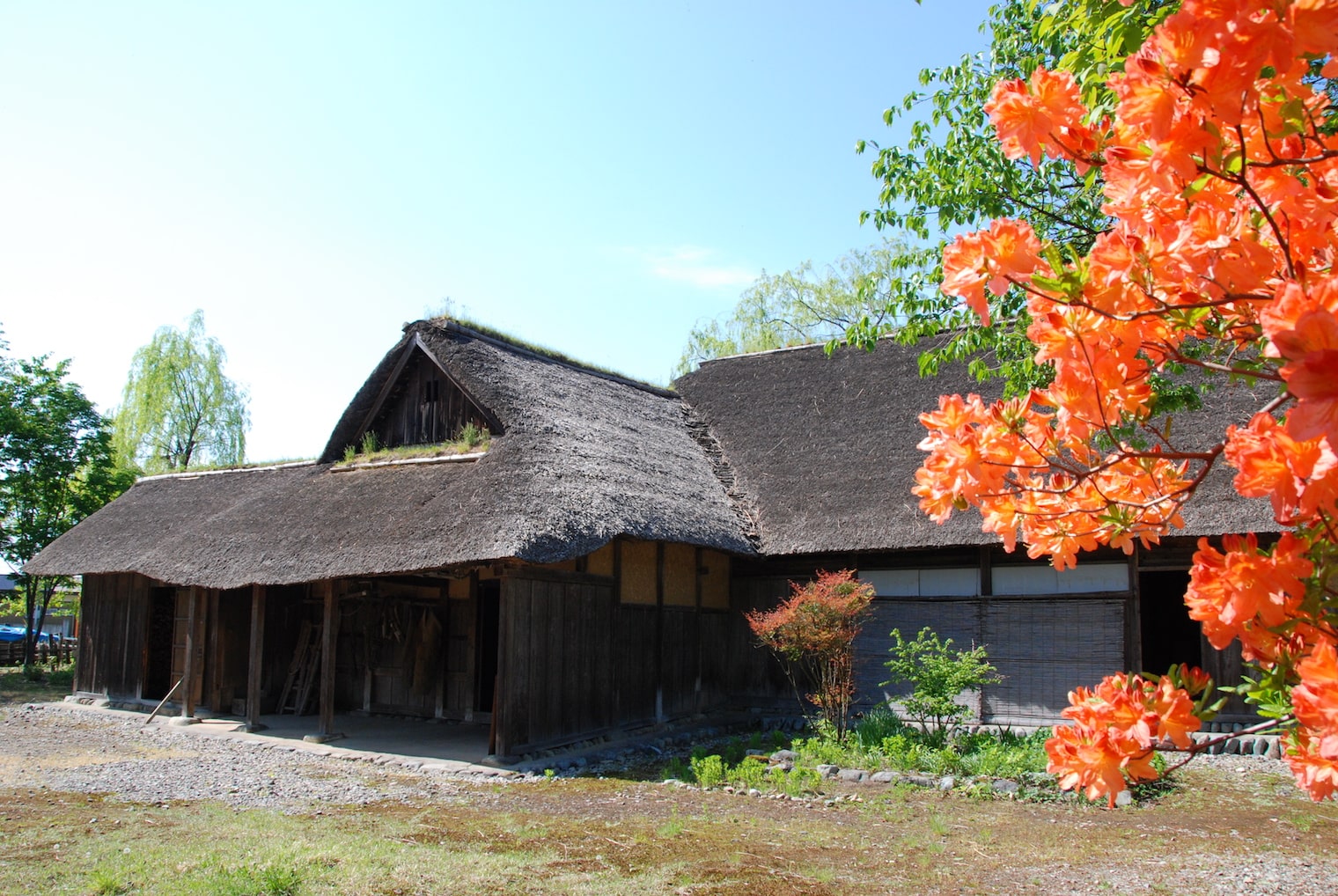
Building whole view
The Yahagi house was relocated from Hagino, west of its current location.
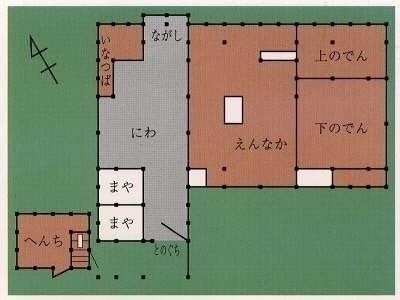
layout drawing
Entering through the tonoguchi entranceway, the maya (stable) can be seen to the left. Further inside, on the beaten earth doma floor, are the kitchen and inatsuba (rice storage area).
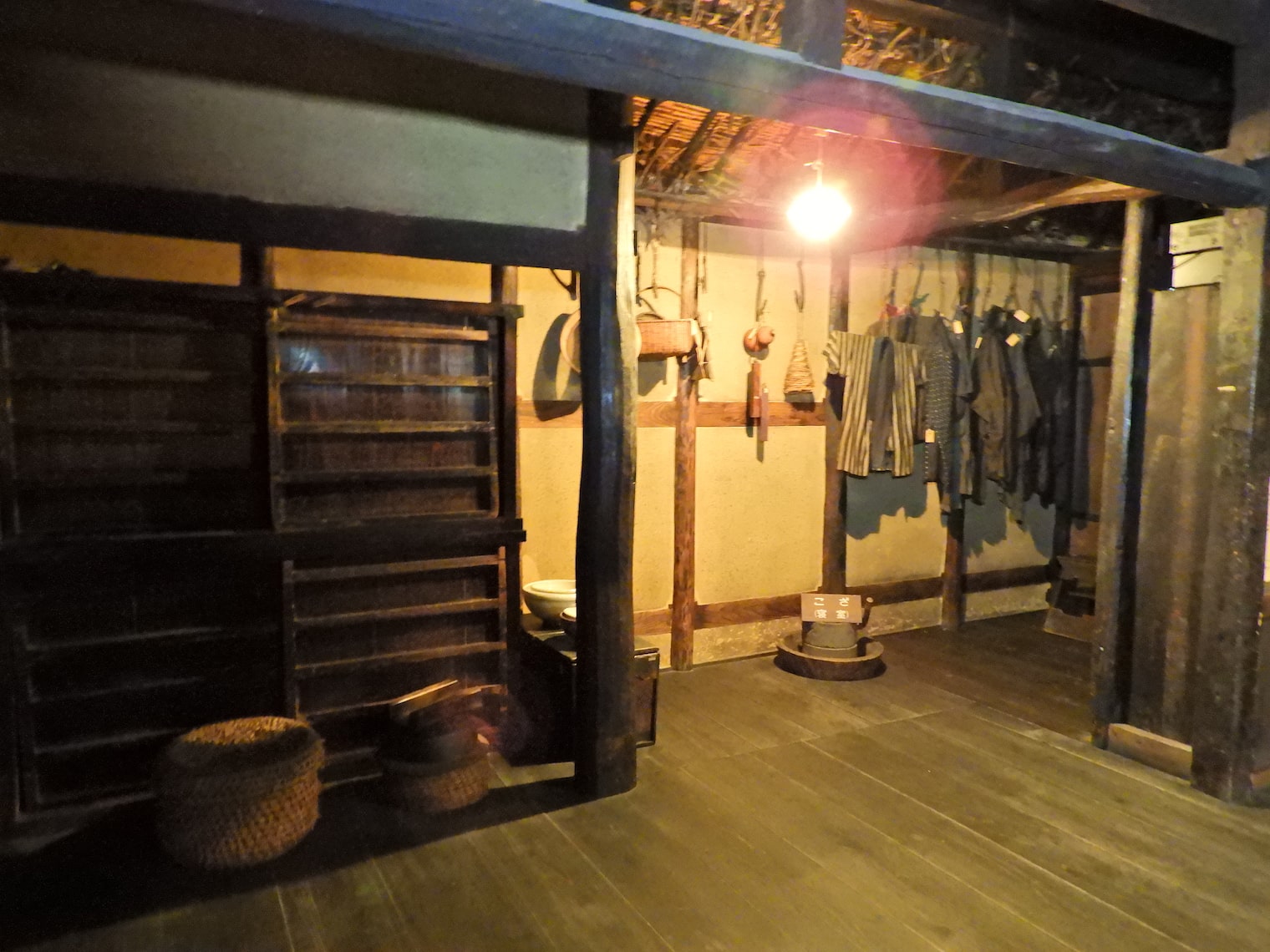
hearth
On the right of the upper floor is shitanoden (room for entertaining guests). On the ground floor is the ennaka, or living room, where the family altar and hearth are located.
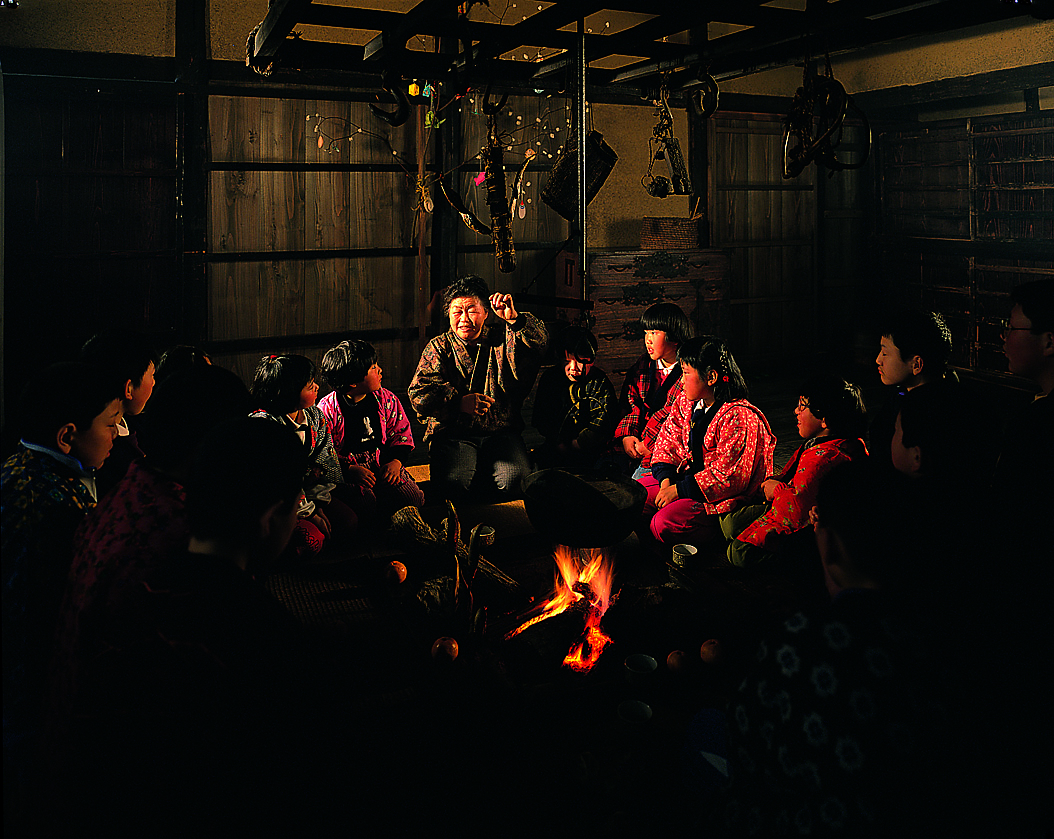
Folk tale festival pictures
The annual Michinoku Minwa Matsuri (Michinoku Folklore Festival)

 日本語
日本語 繁体字
繁体字 English
English Korean
Korean